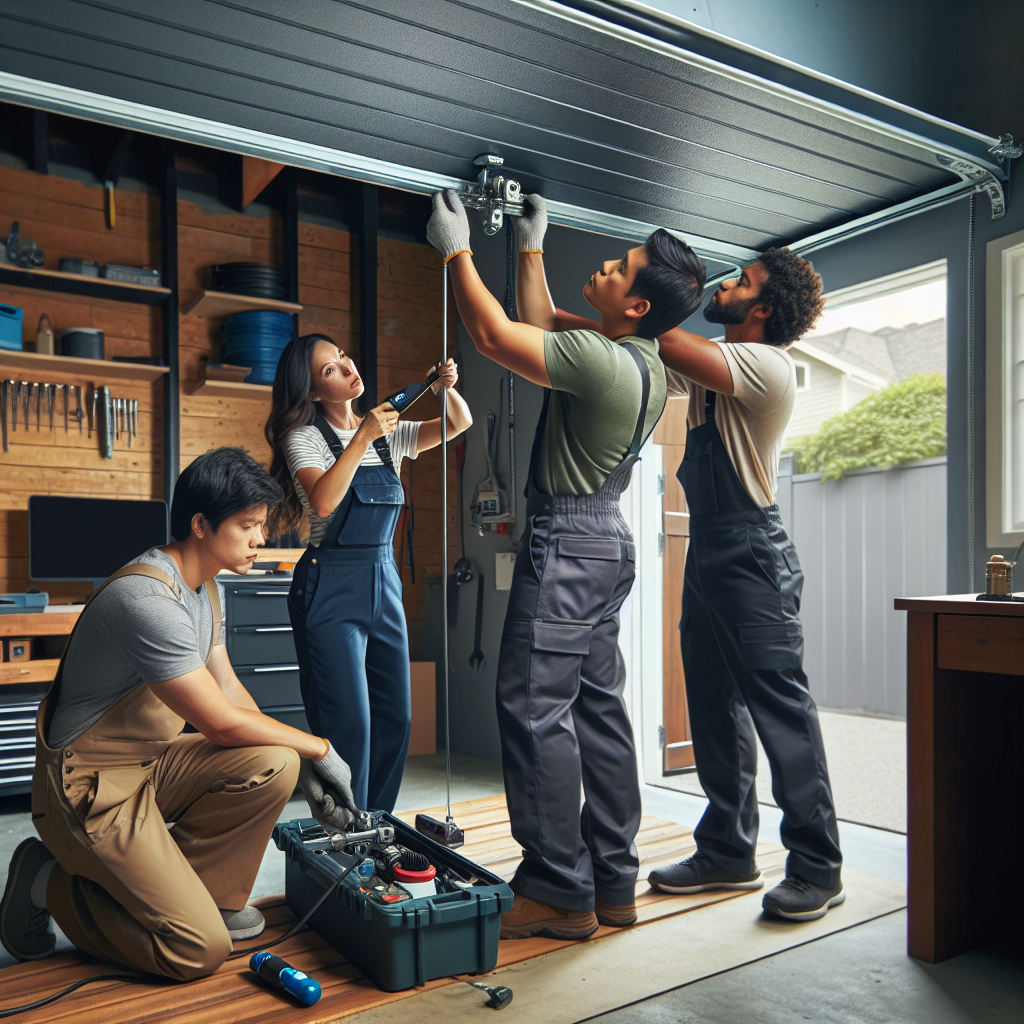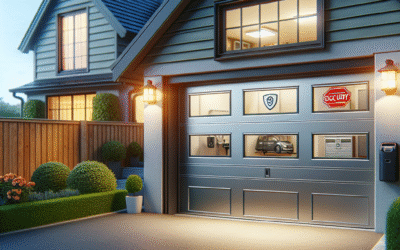Key Milestones and Typical Durations in Garage Door Service Processes
When your garage door starts acting up, the frustration can quickly turn into a pressing need for repair or replacement According to government garage door repair data,. Whether it’s a stubborn door that won’t open, strange noises coming from the mechanism, or a complete malfunction, understanding the timeline of garage door services can make all the difference in getting your home back to normal swiftly and smoothly. Many homeowners underestimate the complexity and time involved in diagnosing, ordering parts, and completing repairs, which can lead to unnecessary delays and added stress. By gaining insight into the typical stages and timeframes of garage door maintenance and repairs, you can better prepare for the process and make informed decisions that protect your investment and enhance your home’s security and curb appeal.
Garage door services encompass a wide range of tasks, from routine maintenance to emergency repairs and full replacements, each with its own timeline influenced by factors such as the type of door, availability of parts, and the expertise of the technician. Understanding these timelines not only helps you set realistic expectations but also allows you to prioritize repairs and schedule service appointments efficiently. In this article, we’ll break down the typical steps involved in garage door servicing, highlight common delays, and offer tips on how to streamline the process. Whether you’re a homeowner facing an unexpected breakdown or planning ahead for regular upkeep, knowing what to expect can save you time, money, and hassle.
Initial Assessment and Diagnosis
The garage door service timeline typically begins with a thorough inspection to identify any issues. This step is crucial for understanding the scope of repairs or maintenance needed and helps in providing an accurate estimate.
Scheduling and Arrival Time
Once the assessment is complete, scheduling the service appointment is the next phase. Professional garage door companies usually offer flexible time slots and provide an estimated arrival time to ensure convenience for the customer.
Repair or Maintenance Process
The duration of the actual repair or maintenance work varies depending on the complexity of the problem. Routine maintenance might take less than an hour, while more extensive repairs or part replacements could require several hours.
Parts Replacement and Availability
If specific parts are needed, the timeline may extend based on part availability. Reliable service providers often keep common parts in stock to minimize delays, but custom or rare components might take additional time to procure.
Post-Service Testing and Customer Guidance
After completing the service, technicians perform tests to ensure the garage door operates smoothly and safely. They also provide customers with maintenance tips and advice to prolong the lifespan of the door and prevent future issues.
Introduction to Garage Door Services Timeline
Understanding the timeline of garage door services is crucial for homeowners who want to maintain the safety (see .edu garage door safety regulations), functionality, and aesthetic appeal of their garage doors. Garage doors are complex mechanical systems that require regular maintenance, timely repairs, and occasional replacements. Knowing how often these services should be performed and what each stage entails can save you from unexpected breakdowns and costly repairs. For example, a well-maintained garage door can operate smoothly for 15 to 30 years, but neglecting routine care might reduce this lifespan significantly. This article will guide you through the typical timeline of garage door services, from installation to maintenance, repair, and eventual replacement.
Initial Installation and Setup
The timeline for garage door services begins with the initial installation. This phase is critical because a proper setup ensures the door operates efficiently and safely for years to come. Installation typically takes a few hours to a full day depending on the door type—whether it’s sectional, roll-up, or tilt-up—and the complexity of the opener system. During installation, professionals will assess the structural integrity of your garage frame, install the door panels, springs, tracks, and opener, and perform safety tests. It’s important to hire experienced technicians who will calibrate the door’s tension and balance correctly to avoid premature wear and tear. After installation, you should receive guidance on basic maintenance and troubleshooting tips to keep your door in optimal condition.
Routine Maintenance Schedule
After installation, regular maintenance is the next crucial step in the garage door service timeline. Experts recommend scheduling maintenance at least twice a year, typically in spring and fall, to prepare for seasonal changes. Maintenance includes lubricating moving parts such as rollers, hinges, and springs, tightening hardware, inspecting cables for fraying, and testing the door’s balance and auto-reverse safety features. For example, applying a silicone-based lubricant can reduce friction and extend the life of your door components. Additionally, cleaning the door’s surface and checking weather seals help prevent rust and energy loss. Homeowners can perform some of these tasks themselves, but it’s advisable to have a professional inspection annually to identify hidden issues before they escalate.
Common Repairs and Their Timing
Despite regular maintenance, garage doors may require repairs due to wear, accidental damage, or component failure. Common repairs include fixing broken springs, replacing worn cables, realigning tracks, and repairing or replacing the opener motor. The timing for these repairs varies; for instance, torsion springs generally last about 10,000 cycles (approximately 7-10 years for average use) before needing replacement. If you notice the door is noisy, jerky, or fails to open smoothly, it’s time to schedule a repair immediately to prevent further damage. Ignoring small issues like a misaligned track can lead to costly repairs or even safety hazards. Prompt attention to repairs ensures the door remains secure and functional.
Emergency Garage Door Services
Sometimes garage door problems require urgent attention outside of regular service schedules. Emergency services are often needed when the door is stuck open or closed, the opener fails, or there’s a security breach. For example, a broken spring can cause the door to suddenly drop, posing a serious safety risk. Many garage door service providers offer 24/7 emergency repair to address these situations promptly. It’s important to have the contact information of a trusted local technician ready so you can act quickly. While waiting for emergency repair, avoid attempting DIY fixes on high-tension parts like springs, as this can be dangerous.
Signs It’s Time for a Garage Door Replacement
Eventually, even the best-maintained garage doors will reach the end of their service life. Knowing when to replace your garage door is part of understanding the overall service timeline. Common signs include frequent breakdowns, excessive noise, slow operation, visible rust or damage, and outdated technology that compromises security or energy efficiency. For example, if your door opener is more than 15 years old, upgrading to a modern, quieter, and smart-enabled model can improve convenience and safety. Replacement also offers a chance to enhance curb appeal with new styles and colors. Consulting a professional can help you weigh repair costs against replacement benefits to make an informed decision.
Cost Considerations Over the Service Timeline
Budgeting for garage door services requires understanding the typical costs associated with each stage of the timeline. Initial installation costs vary widely based on door material and features but generally range from $800 to $2,500. Routine maintenance is relatively affordable, often between $100 and $200 per visit, and can prevent expensive repairs. Repair costs depend on the issue; for instance, spring replacement might cost $150 to $350, while opener repairs can be $100 to $300. Replacement doors, including installation, can range from $1,000 to $4,000 or more. Planning for these expenses over time helps avoid financial surprises and ensures your garage door remains reliable and safe.
DIY Tips vs. Professional Services
While some garage door maintenance tasks can be handled by homeowners, others require professional expertise. Simple jobs like cleaning tracks, lubricating rollers, and checking weather seals are safe DIY options. However, tasks involving springs, cables, and opener repairs should be left to licensed technicians due to the risk of injury and the need for specialized tools. For example, improperly handled spring replacement can cause serious harm or damage to your door. Understanding when to call a professional versus handling a job yourself is key to maintaining your garage door’s longevity and safety. Many service providers offer maintenance packages that combine professional inspections with homeowner tips to keep your door in top shape.
Seasonal Considerations in the Service Timeline
Seasonal changes affect garage door performance and should influence your service timeline. Cold weather can make metal components contract and become brittle, increasing the risk of spring breakage or opener strain. Conversely, heat and humidity can cause wood doors to warp or paint to peel. Scheduling maintenance before winter and summer ensures your door is prepared for these conditions. For instance, checking and replacing weather seals before winter can improve insulation and reduce heating costs. Additionally, spring inspections can address any damage caused by winter storms. By aligning your garage door services with seasonal needs, you extend the door’s lifespan and enhance home comfort.
Conclusion and Best Practices for Garage Door Care
Understanding the timeline of garage door services empowers homeowners to take proactive steps in maintaining and repairing their doors. From proper installation to regular maintenance, timely repairs, and knowing when to replace, each phase plays a vital role in ensuring safety, functionality, and curb appeal. Best practices include scheduling biannual maintenance, addressing repairs promptly, and choosing professional services for complex tasks. Keeping a service log and working with a trusted local technician can streamline this process. With informed care, your garage door will provide reliable operation and peace of mind for many years.
1. How long does a typical garage door repair take?
The duration of a garage door repair depends on the specific issue, but most common repairs, such as fixing a broken spring or replacing a sensor, usually take between 1 to 2 hours. More complex problems may require additional time.
2. What factors influence the timeline of garage door installation?
Several factors affect the installation timeline, including the type and size of the door, whether it’s a custom design, the condition of the existing frame, and the experience of the technicians. Generally, a standard garage door installation takes about 4 to 6 hours. For more information, see government garage door maintenance research.
3. How quickly can I expect emergency garage door services?
Emergency garage door services are typically available within a few hours of your call, depending on the company’s availability and your location. Many providers offer same-day service to address urgent issues like a door stuck open or closed.
4. Is there a recommended schedule for routine garage door maintenance?
It’s advisable to have your garage door inspected and maintained at least once a year. Regular maintenance helps prevent unexpected breakdowns and can extend the lifespan of your door and its components.
5. How long does it take to replace garage door springs?
Replacing garage door springs is usually a quick job, often completed within 1 to 2 hours. However, the timeline can vary depending on whether both springs need replacement and the type of springs used.
6. Can weather conditions affect the timing of garage door services?
Yes, adverse weather conditions such as heavy rain, snow, or extreme cold can delay garage door services. These factors may impact travel time for technicians or complicate the repair or installation process.
7. How long should I expect to wait for parts if they are not in stock?
If specific parts are not readily available, the wait time can range from a few days to a couple of weeks, depending on the supplier and the part’s availability. It’s best to confirm with your service provider about potential delays upfront.
8. What is the typical timeline for upgrading to an automatic garage door opener?
Upgrading to an automatic garage door opener usually takes about 2 to 4 hours. This includes removing any existing manual hardware, installing the new opener, and testing the system to ensure proper operation.
9. How soon should I schedule garage door service after noticing a problem?
It’s recommended to schedule service as soon as you notice any issues such as unusual noises, slow operation, or difficulty opening and closing. Prompt attention can prevent further damage and potentially reduce repair time and costs.
10. Are there any delays I should anticipate during garage door replacement projects?
Potential delays during replacement projects can arise from unexpected structural issues, custom order wait times, or complications discovered during removal of the old door. Communicating with your service provider before starting can help set realistic expectations.
Conclusion: Mastering Your Garage Door Service Timeline
Understanding the typical timeline for garage door services—from initial inspection and diagnosis to repair or replacement—is essential for homeowners aiming to maintain safety and functionality. Timely maintenance can prevent unexpected breakdowns, while knowing how long each service step takes helps in planning and minimizing inconvenience. Whether it’s a simple spring replacement or a complete door overhaul, being informed about the process ensures smoother communication with service providers and sets realistic expectations for completion.
Don’t wait until a minor issue becomes a costly emergency. Schedule a professional garage door inspection today to keep your system running efficiently and extend its lifespan. Contact your trusted local garage door experts now to receive prompt, reliable service tailored to your needs. Staying proactive not only safeguards your home but also provides peace of mind, knowing your garage door operates safely and smoothly year-round.





0 Comments